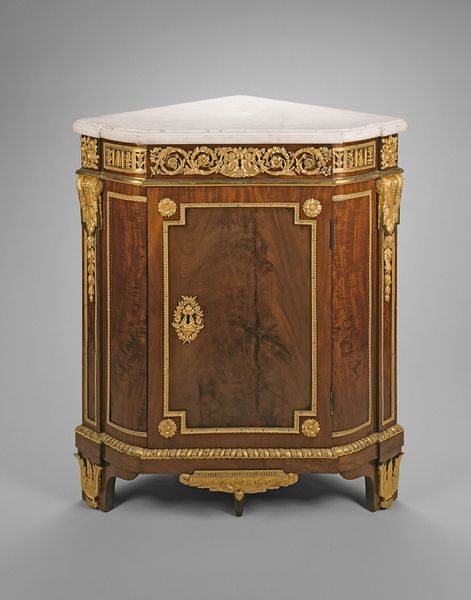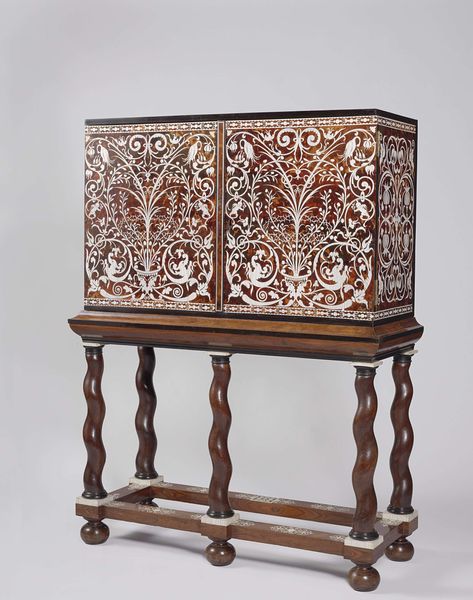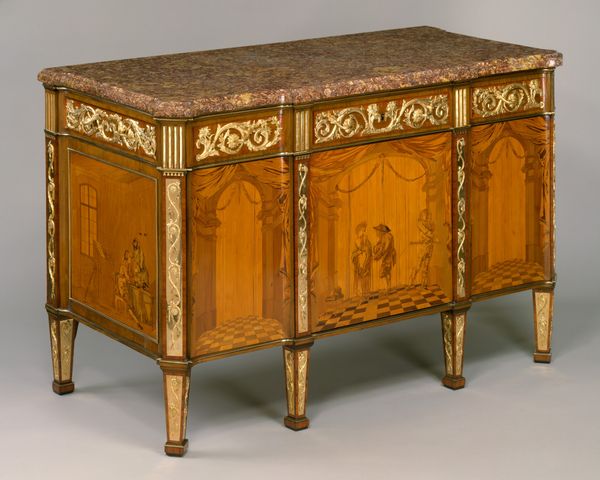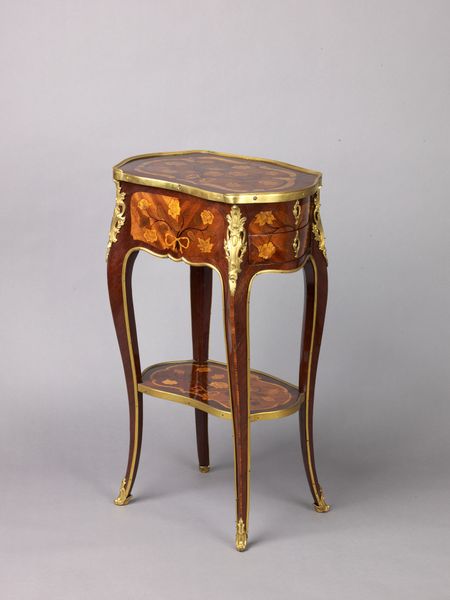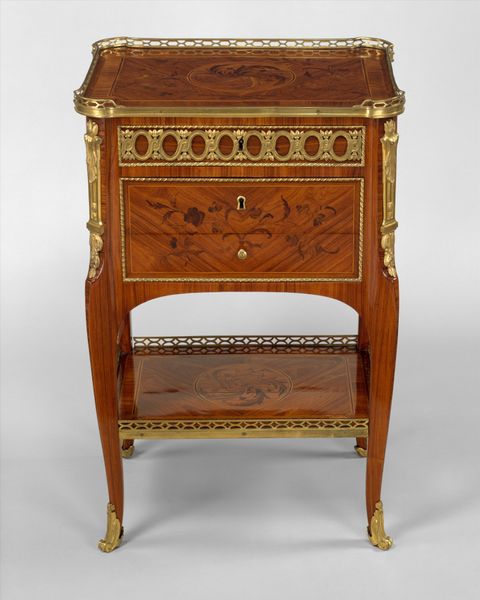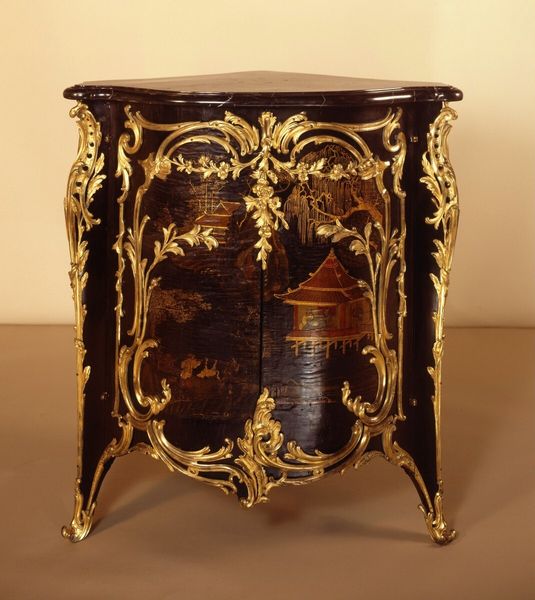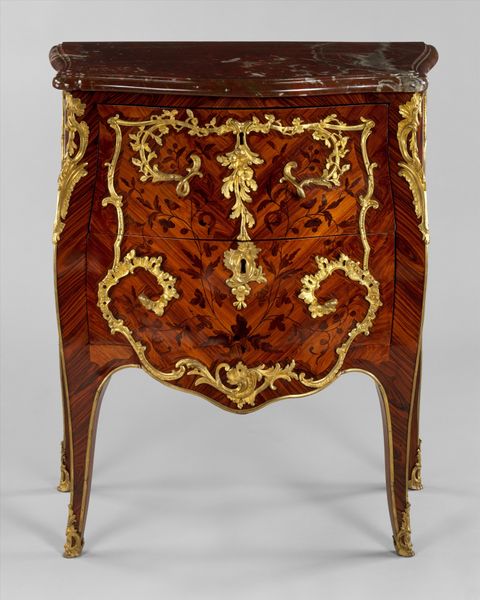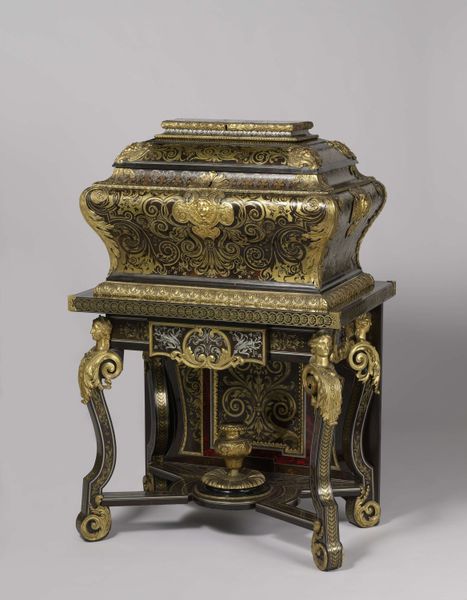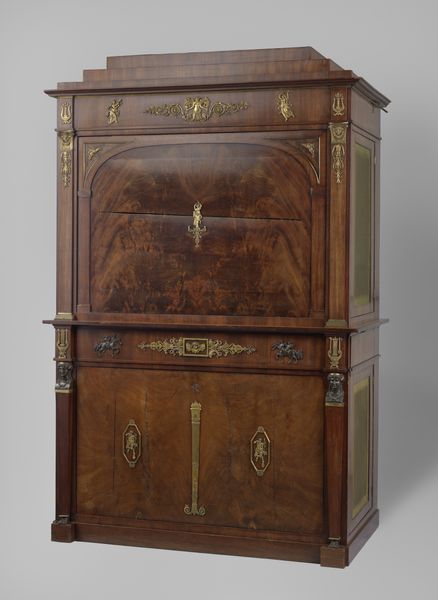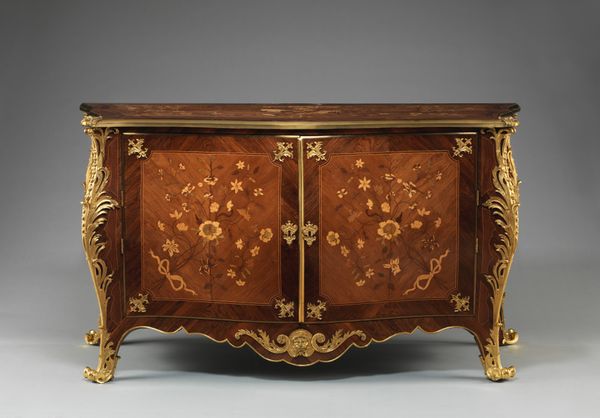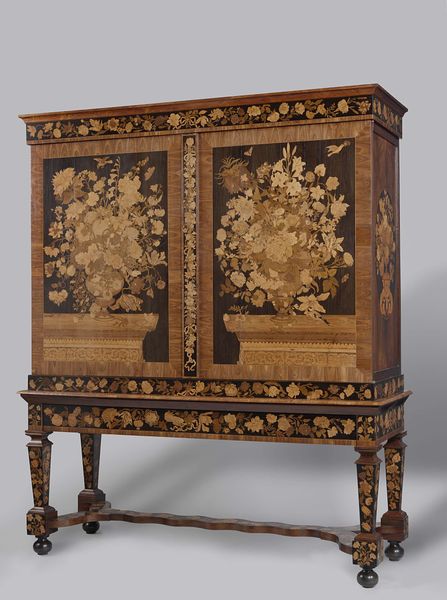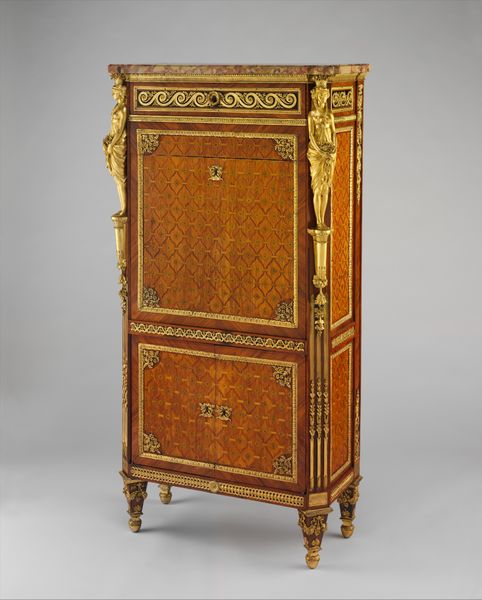
carving, metal, wood, marble
#
wood texture
#
carving
#
metal
#
sculpture
#
wood
#
decorative-art
#
marble
#
rococo
Dimensions: 36 1/4 x 29 x 19 1/2 in. (92.1 x 73.7 x 49.53 cm)
Copyright: Public Domain
Curator: Immediately, I'm struck by how this piece blends opulence with utility. There's an undeniable celebration of wealth and status embedded within. Editor: Exactly. What we’re seeing are a pair of corner cabinets, or encoignures, dating back to the 18th century, created by Jean-Chrysostome Stumpff. These pieces embody the Rococo style with its characteristic flourish. Note the materials: various woods, marble, and metal, all contributing to its splendor. Curator: The marquetry is incredible. That chevron pattern of wood veneers speaks to a culture deeply invested in luxury craftsmanship, almost obsessively detailed. What's your take on that visual intensity? Editor: It highlights the artisan's mastery, absolutely, but let's also think about the conditions of its production. Luxury items like this signal intense specialization and the labor division, where expert hands dedicate hours to refining the materials and achieving those patterns. We can analyze the economic context which enables such a piece. Curator: I see it more as the embodiment of aristocratic power, these cabinets served as both functional furniture and explicit symbols of wealth. Its existence begs the questions: Whose hands truly created this? Who benefitted? Whose stories were erased so that families could show off such detailed woodworking? Editor: And consider the materiality beyond just wood. The marble top provides a durable, functional surface while adding another layer of visual sumptuousness. The gilding highlights and accentuates the overall design, catching light and drawing the eye. The material contributes directly to its aesthetic and social function. Curator: Looking at it now, there's a strange tension between its inherent beauty and its potential symbolic association with past social inequalities, isn't there? These objects raise so many interesting and uncomfortable conversations. Editor: Absolutely. By engaging with these narratives around labor, luxury and design, and looking deeply into the construction itself, we can use objects like this as crucial lenses through which to understand class structure in history and challenge power dynamics of the present.
Comments
minneapolisinstituteofart over 1 year ago
⋮
This pair of corner cabinets displays characteristics of the early Neoclassical style in their restrained, symmetrical forms, ormolu (gilt-bronze) mounts, and wood veneers, or thin sheets of wood. Jean-Chrysotome Stumpff was originally from southwestern Germany but came to Paris in 1760 and worked in the Rococo and Neoclassical styles. He is best known for his dynamic veneer work employing the natural patterns of the thin sheets of wood to create geometric and floral patterns.
Join the conversation
Join millions of artists and users on Artera today and experience the ultimate creative platform.
